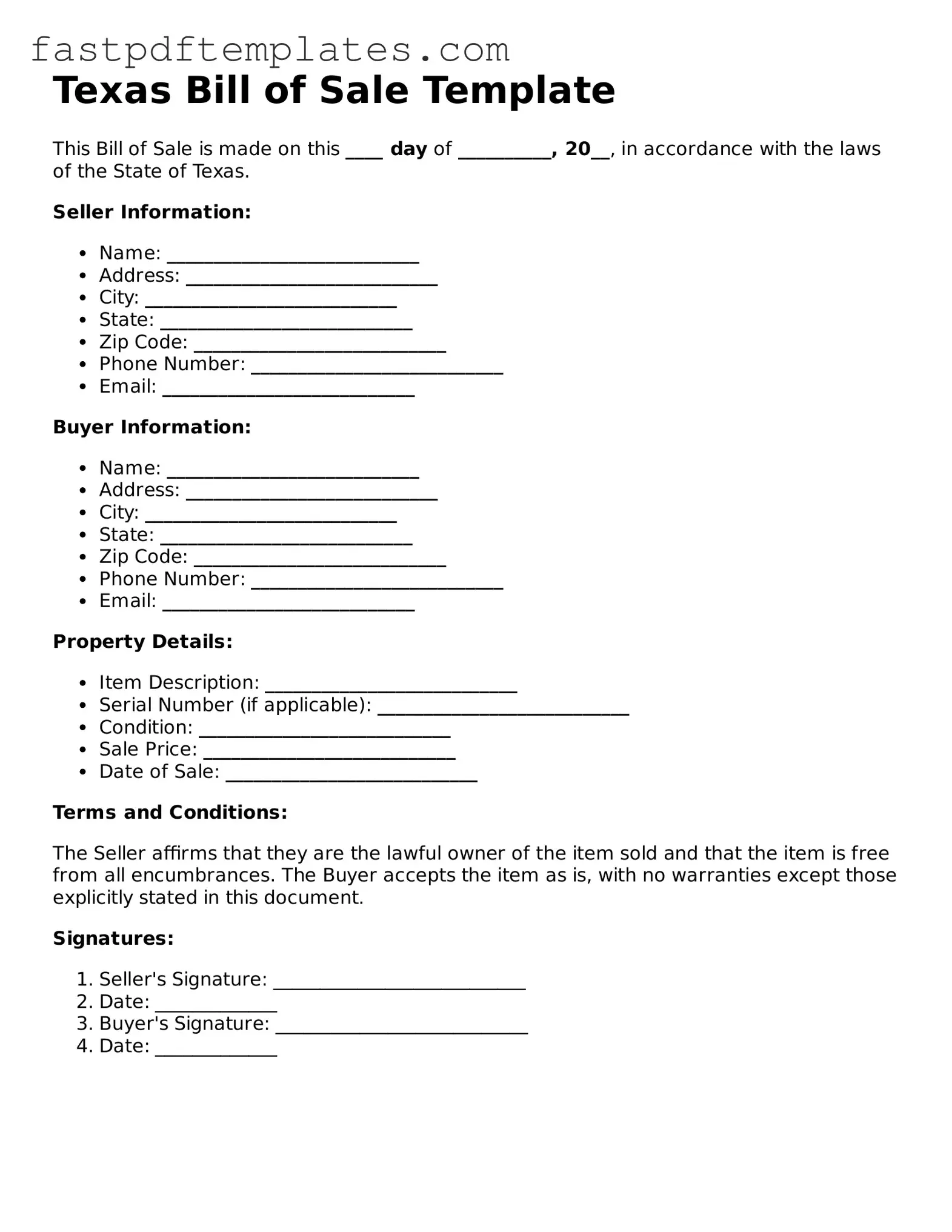The Texas Bill of Sale form shares similarities with the Vehicle Title Transfer document. Both serve as official records that transfer ownership from one party to another. In the case of a vehicle title transfer, the document must be completed when a vehicle is sold, ensuring that the new owner has legal rights to the vehicle. Like the Bill of Sale, the vehicle title transfer includes essential details such as the names of the buyer and seller, the vehicle identification number (VIN), and the sale price. This documentation is crucial for registering the vehicle under the new owner's name with the state authorities.
Another document akin to the Texas Bill of Sale is the Receipt for Payment. This document provides proof of payment for goods or services rendered. While a Bill of Sale typically involves the transfer of ownership of a tangible item, a receipt confirms that a transaction has occurred. Both documents can serve as evidence in disputes, as they outline the specifics of the transaction, including the parties involved and the amount paid. The clarity provided by these documents helps protect both buyers and sellers in the event of misunderstandings or legal challenges.
The Lease Agreement also bears similarities to the Texas Bill of Sale, particularly in its function of documenting an exchange between parties. A lease agreement outlines the terms under which one party can use another's property, usually for a specified period and in exchange for rent. Like the Bill of Sale, it includes details about the parties involved, the property in question, and the agreed-upon terms. Both documents serve to protect the interests of the parties by clearly stating their rights and responsibilities.
The Warranty Deed is another document that resembles the Texas Bill of Sale in that it facilitates the transfer of property ownership. While a Bill of Sale is often used for personal property, a warranty deed is specifically for real estate transactions. This document guarantees that the seller has clear title to the property and the right to sell it. Both documents require signatures from the parties involved and often need to be notarized to ensure their validity. They serve as vital records that provide legal protection to the new owner.
Lastly, the Power of Attorney document shares some characteristics with the Texas Bill of Sale, particularly regarding the delegation of authority. A Power of Attorney allows one person to act on behalf of another in legal or financial matters. In transactions involving a Bill of Sale, if one party is unable to sign the document, a Power of Attorney can authorize someone else to complete the sale. Both documents require careful attention to detail and clarity to avoid misunderstandings, ensuring that the intentions of the parties are accurately reflected.
